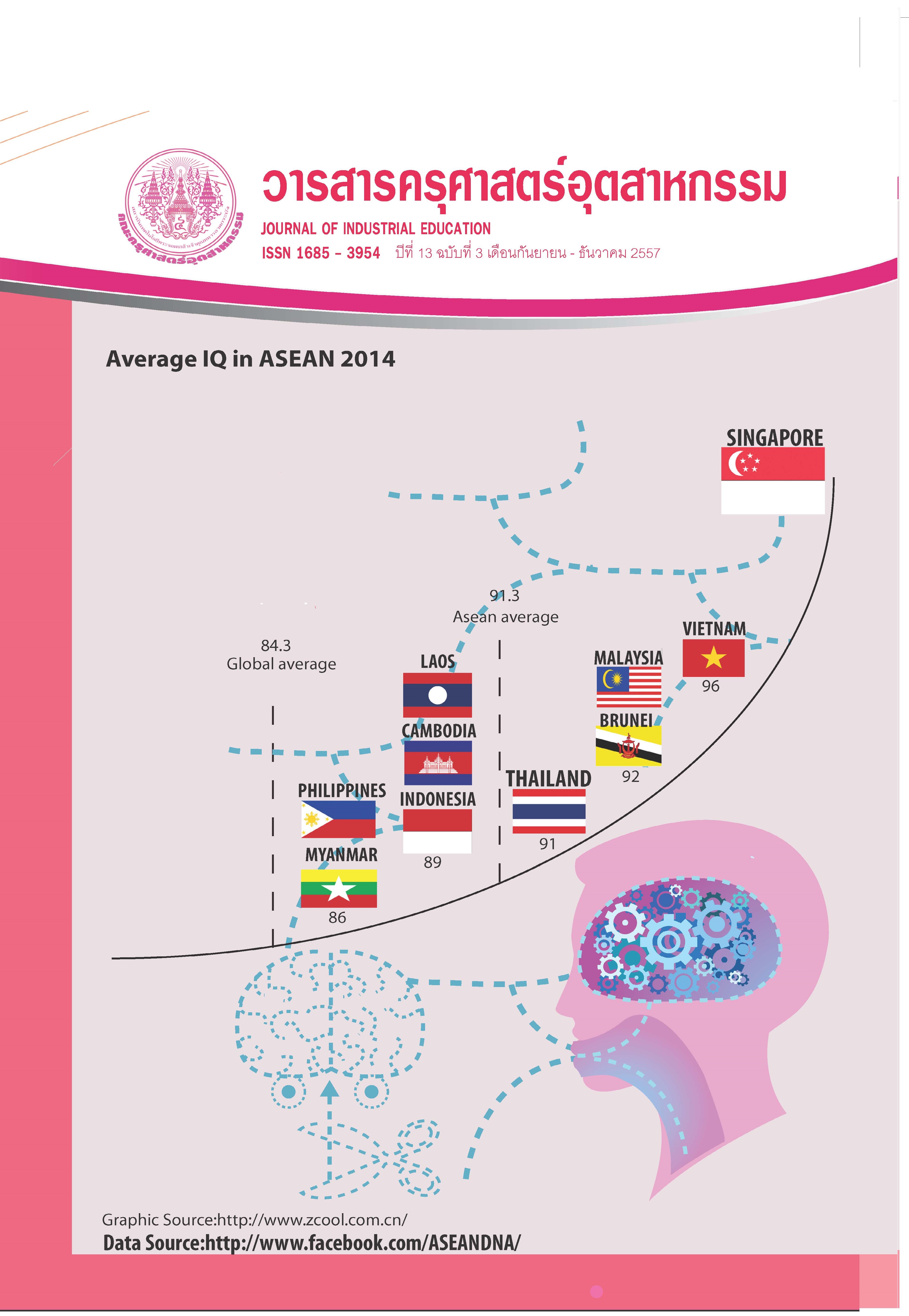The Development of Behavioral Criteria for Thai Pilots’ Nontechnical Skills Assessment
Keywords:
Development of Criteria, Behavioral of Skill, Behavioral Assessment Criteria, Pilot’s Nontechnical Skills, Thai PilotsAbstract
The objective of this study was to develop the behavioral criteria for Thai pilots’ non-technical skills assessment. The research methodology was divided in to two stages with four steps. The first stage, first and second steps, was to create the criteria. The second stage, third and fourth steps, was to assess the developed criteria. The first step samples were the 13 purposive sampling of psychiatrists and professional pilots who were responsible for the airline pilots’ behavioral assessment. Data was collected three times with Delphi technique. The second step samples were 359 Stratified random sampling of pilots who were concerning with the behavioral assessment. Data was collected by questionnaires.The third step samples were 30 purposive sampling of pilots who were involved in the behavioral assessment. Data was collected by trial assess of predefined scenario (interviews) and questionnaires. The fourth step samples were 30 purposive sampling evaluators who were involved in the behavioral assessment. Data was collected by seminar and trial assesses of predefined scenario (video) and questionnaires. The statistics applied to analyze were Percentage Mean Median Interquartile Range and Mode. The results showed that the behavioral criteria for Thai pilots’ non-technical skills assessment consist of 5 categories. Each category consists of four indicators which made a total of 20 indicators. There were 105 samples of behaviors that were appropriate and had the possibility to collect the data. The five categories of behavioral criteria for Thai pilots’ non - technical skills assessment were as following 1) co-operation 2) leadership and managerial skills 3) situational awareness 4) decision making and problem solving and 5) communication.
References
[2] Sala-i-Martín, X. 2013. The GlobalCompetitiveness Index 2013–2014: Sustaining Growth, Building Resilience.The Global Competitiveness Report 2013–2014. Switzerland: SRO-Kundig.
[3] International Monetary Fund. 2014. Countryand Regional Perspectives , World Economic Outlook. April 2014 Recovery Strengthens, Remains Uneven,Washington.DC. International Monetary Fund Publication Services.
[4] International Air Transport Association. 2013.The industry story in 2012,IATA Annual Review 2013. IATA.
[5] สำนักงานคณะกรรมการพัฒนาการเศรษฐกิจและสังคมแห่งชาติ. 2554. วิสัยทัศน์และยุทธศาสตร์การพัฒนา, แผนพัฒนาเศรษฐกิจและสังคมแห่งชาติฉบับที่สิบเอ็ด พ.ศ. 2555 – 2559. สำนักนายกรัฐมนตรี.
[6] International Civil Aviation Organization. 2013.Appendix 1: Analysis of Accidents –Scheduled Commercial Air Transport, ICAO 2013 Safety Report. Montreal: InternationalCivil Aviation Organization.
[7] Civil Aviation Authority UK. 2013. Executive Summary, CAP 1036. Global Fatal Accident Review 2002 to 2011. UK, TSO (The Stationery Office) on behalf of the UK Civil Aviation Authority.
[8] Civil Aviation Authority UK. 2006. CAP 737.Crew Resource Management (CRM) Training, 2 ed. UK, TSO (The Stationery Office) on behalf of the UK Civil Aviation Authority.
[9] The JARTEL Group. 2002. Developing a Method for Evaluating Crew Resource Management Skills: A European Perspective. England. THE INTERNATIONAL JOURNAL OF AVIATION PSYCHOLOGY. 12(3). Lawrence Erlbaum Associates. Inc. Aberdeen University
[10] กรมการบินพลเรือน. 2497. พระราชบัญญัติ ในการเดินอากาศ 2497. หมวด 5 เรื่องผู้ประจำหน้าที่. กรมการบินพลเรือน.
[11] Macmillan, Thomas T.1971. The Delphi Technique, paper presented at the annual meeting of the California Junior Colleges Association Commission on Research and Development (3 May 1971), Monterey,California
[12] มหาวิทยาลัยเทคโนโลยีราชมงคลพระนคร.แนวทางการพัฒนาระบบสมรรถนะเพื่อพัฒนาการบริหารทรัพยากรบุคคล.ค้นเมื่อวันที่ 3 มีนาคม 2556, จาก https://competency.rmutp.ac.th.
[13] B. Klampfer, R. Flin, R.L. Helmreich, R.Hausler, B. Sexton, G. Fletcher, P. Field, S.Staender, K. Lauche, P. Dieckmann and A.Amacher. 2001. ENHANCING ERFORMANCE IN HIGH RISK ENVIRONMENTS:Recommendations for the use of Behavioural Markers. Swiss Federal Institute of Technology (ETH) Zurich
[14] กรมการบินพลเรือน.2553.ระเบียบกรมการบินพลเรือน ว่าด้วยการรับรองหลักสูตรการบริหารทรัพยากรบุคคลด้านการบิน (Crew Resource Management:CRM). 2553. กรมการบินพลเรือน
[15] The Human Factors Group. 2013. CRM Behavioural marker systems. Retrieved October 01, 2013, from www.raes-hfg.com/reports/CRM_Behavioural_marker_systems.doc ()
[16] Thai Airways International PCL. 2011.CRM THAI. Flight Crew ResourceTraining Department. Bangkok: Thai Airways International PCL
[17] Roth, W.-M., & Marvin, T.J. 2013. Assessment of non-technical skills: From measurement to categorization modeled by fuzzy logic. Aviation Psychology and applied Human Factors.
[18] LMQ. 2013. LMQ HF Model - Non Technical Skills Assessment Form.(n.p.)
[19] จันทร์จิรา ภมรศิลปธรรม. 2550-2551.ความคิดเห็นของครูและนักเรียนระดับประกาศนียบัตรวิชาชีพ (ปวช.).วารสารครุศาสตร์อุตสาหกรรม. 7(1). น. 87-99.
[20] ศตวัฒน์ มงคลดิษฐ และคณะ. การพัฒนาแบบวัดภาคปฏิบัติวิชาเครื่องมือวัดไฟฟ้าและอิเล็กทรอนิกส์สาขาวิชาช่างอิเล็กทรอนิกส์ตามหลักสูตรประกาศนียบัตรวิชาชีพ.วารสารครุศาสตร์อุตสาหกรรม. 11(2) น. 81.
Downloads
Published
How to Cite
Issue
Section
License
"The opinions and contents including the words in papers are responsibility by the authors."
"ข้อคิดเห็น เนื้อหา รวมทั้งการใช้ภาษาในบทความถือเป็นความรับผิดชอบของผู้เขียน"



